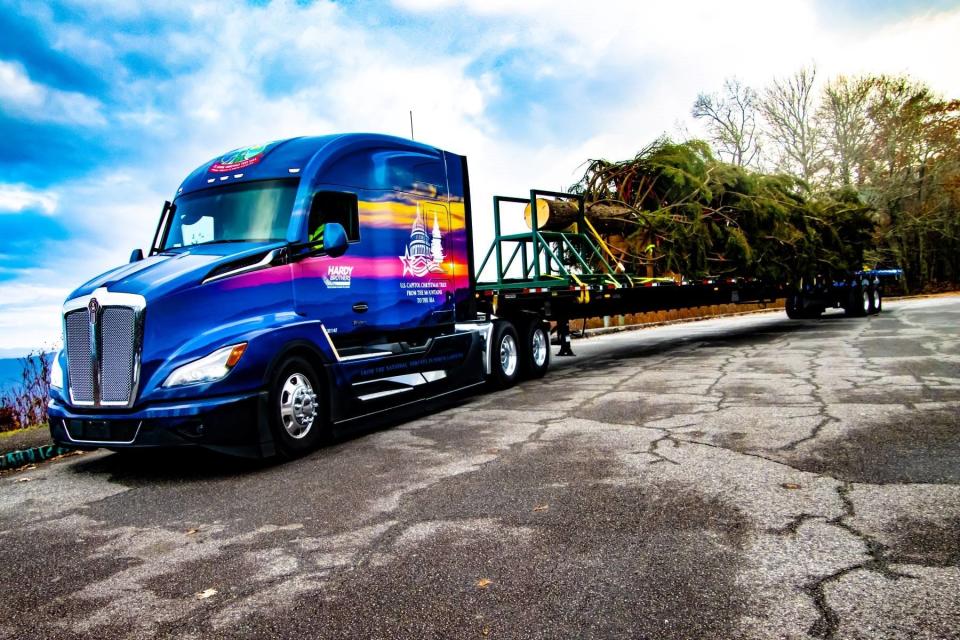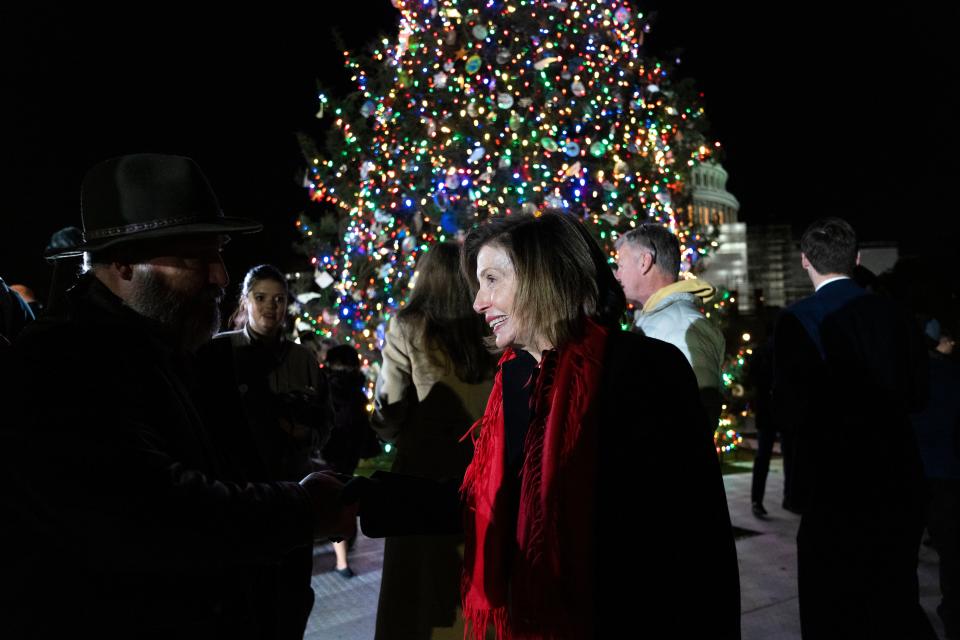Why Christmas is the most important time of year for some NC farmers
When the lights were turned on for the U.S. Capitol Christmas Tree late last month, a little bit of North Carolina was again front and center in downtown Washington, D.C.
Well, not that little of a piece. That's because the 78-foot red spruce, called Ruby, freshly cut down from Pisgah National Forest near Asheville, was hard to miss.

The North Carolina tree comes a year after a smaller, but equally as majestic state pine was selected to be the official White House Christmas tree.
The accolades from the nation's capital are just the latest validation on how important the Christmas tree industry is to many North Carolina mountain farmers, where growing other crops would face the handicap of smaller field areas, shorter growing seasons than their lower-elevation neighbors, and challenging logistics of getting the products to market.
“It’s basically the agricultural crop for Western North Carolina," said Dr. Jim Gregory, a retired forester with N.C. State University.
How big is North Carolina's Christmas tree industry?
"North Carolina is pretty much the North Pole of Christmas trees," states a post by the N.C. State Extension, succinctly summing up the industry's importance to the state.
The Tar Heel State grows more than 4 million Christmas trees across roughly 39,000 acres annually, ranking it No. 2 in the country (only behind Oregon, albeit by nearly 2 million trees.)
With nearly 900 Christmas tree farms, even the Grinchiest of live tree shoppers are only a short drive away from one.
And all that green produces plenty of real green. Jeff Owen, an extension forestry specialist at NC State, said the latest estimate is the industry has an overall economic impact of nearly $337 million, which is higher than earlier estimates.
"We found that those earlier numbers, which were around $80 million, didn't reflect the overall impact and weren't keeping up with inflation and pricing," he said.
Where are North Carolina's tree farms located?
Fraser firs are by far the state's most popular Christmas tree, and most of those grow the best in Western North Carolina counties.
“Christmas trees, particularly Fraser firs, were one of the first things mountain farmers could do better than their flat-land neighbors," Owen said, noting the sweet spot for those tree farms is between 2,500 and 3,500 feet of elevation.
That doesn't mean places from the Piedmont east, like the N.C. coast, can't get into the tree-growing business, also. Christmas tree species suited to the lower elevations include white pine, red cedar and Leyland cypress
How is business going?
Farming, whether crops or trees, is always challenging.
This year, inflation and supply chain issues are adding to the economic calculus farmers are having to juggle.
Owen said Christmas trees grown in North Carolina will likely cost 10-15% more than last year. He said the price increases reflect inflated operational costs, which range from labor and raw materials to equipment and land.
Higher operating costs also have seen some small operators, such as family farmers looking for a second crop or investors looking for a quick buck, get out of the business in recent years. But even if the number of tree farms has shrunk, from an estimated 1,300 growers in 2012 to 850 in 2017, Owen said the industry itself has grown.
“We probably have more acreage today than when we had the most growers," he said.
Is climate change a concern?
With Fraser firs requiring higher elevations − and their colder climates − to thrive, any warming of North Carolina's climate will have an impact.
But Owen said farmers aren't strangers to the vagaries of Mother Nature.
“They’ve been tinkering with some of these factors related to climate change since the onset, and they’ll always be tinkering," he said. "That's what makes a good farmer."
That includes when farmers brought the first seedlings down from the tops of North Carolina's mountains, often at altitudes pushing 6,000 feet, early last century as the popularity of a home Christmas tree began to sprout. Eventually, farmers selected and bred trees better suited to the lower elevations.
Today, the Christmas Tree Genetics Program at N.C. State is among the institutions looking to help farmers plant seedlings that offer enhanced protection from disease and invasive pests while also retaining their needles and evergreen color longer.
But there's only so much scientists and farmers can do when their are bigger factors at play. Owen said in three recent years several Western North Carolina mountain counties have been saturated by more than 100 inches of rainfall − likely another sign tied to climate change "supersizing" storms moving up into the Appalachian Valley from the Gulf of Mexico.
"They're having to deal with more events," Owen said of Christmas tree farmers in the mountains, "and it just adds to the other challenges they're facing now."

Reporter Gareth McGrath can be reached at GMcGrath@Gannett.com or @GarethMcGrathSN on Twitter. This story was produced with financial support from 1Earth Fund and the Prentice Foundation. The USA TODAY Network maintains full editorial control of the work.
This article originally appeared on Wilmington StarNews: Why Christmas is the most important time of year for some NC farmers

